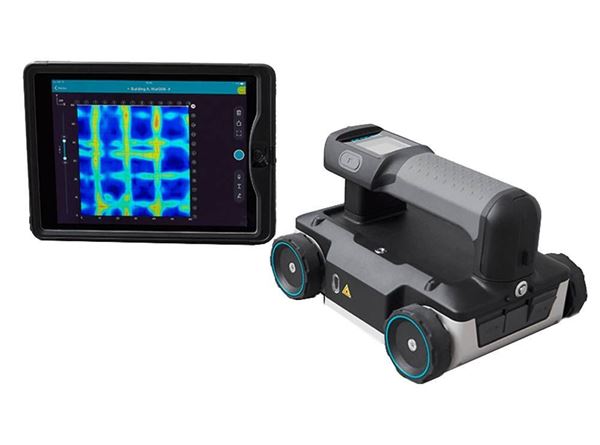Comprehensive Overview to Concrete Scanning Technologies
Comprehensive Overview to Concrete Scanning Technologies
Blog Article
Unveil the Transformative Power of Concrete Scanning in Maximizing Efficiency and Safety And Security
Concrete scanning has arised as an essential device in the construction industry, using unequaled benefits in enhancing project efficiency and making sure safety standards. The transformative power of concrete scanning exists in its capacity to provide real-time information and thorough insights, reinventing just how projects are intended and carried out.
Significance of Concrete Scanning
Ensuring the structural integrity and security of building and construction jobs starts with the vital step of performing complete concrete scanning. Concrete scanning is a non-destructive method made use of to identify and map subsurface aspects within concrete frameworks. This procedure is important in recognizing potential hazards, such as rebar, post-tension cords, and channels, that might be concealed within the concrete. By making use of sophisticated innovations like ground-penetrating radar (GPR) and electro-magnetic induction, building groups can accurately locate these components without creating any damage to the structure.
Additionally, concrete scanning helps in maximizing project timelines and budget plan by avoiding unexpected prices and hold-ups that may arise due to unexpected blockages within the concrete. Eventually, investing in extensive concrete scanning is an aggressive strategy that boosts both efficiency and safety and security in building and construction jobs.
Just How Concrete Scanning Functions
Concrete scanning runs as a vital tool in building and construction tasks by utilizing innovative technologies to find and map subsurface components without causing structural damages. Ground Permeating Radar (GPR) and Electromagnetic Induction (EMI) are two main methods made use of in concrete scanning.
During the scanning procedure, the data collected is analyzed in real-time, permitting instant recognition of potential dangers or barriers underneath the surface area. This info help in decision-making, making certain that building and construction activities proceed safely and effectively. In addition, 3D imaging software application can be used to develop in-depth maps of the subsurface components, better boosting job planning and implementation. By utilizing these innovative technologies, concrete scanning substantially lowers the danger of expensive damages and injuries on building and construction sites.
Advantages of Concrete Scanning
Utilizing advanced scanning innovations in construction projects supplies a wide variety of advantages, improving both effectiveness and security on-site. One of the main advantages of concrete scanning is the capacity to spot and find ingrained items such as rebar, post-tension wires, and channels precisely. By identifying these elements before drilling or reducing right into concrete structures, the danger of accidental strikes is dramatically reduced, avoiding potential injuries to employees and damage to the structure itself. In addition, concrete scanning helps in preparation and creating more successfully, as it offers precise info regarding the location and depth of architectural parts.

Situation Research Studies: Concrete Scanning Success

In another situation, a construction firm utilized 3D concrete scanning to examine the condition of aging concrete structures in a historic structure. The thorough scans provided useful understandings into the degree of degeneration and aided prioritize upkeep initiatives successfully. By proactively resolving areas of worry determined via scanning, the business had the ability to extend the life-span of the framework and ensure occupant safety and security.
These case research studies underscore the transformative power of concrete scanning in improving effectiveness, accuracy, and safety in construction jobs.
Carrying Out Concrete Scanning in Projects
Applying advanced scanning innovations during building jobs has become significantly important for enhancing accuracy and security. By integrating concrete scanning into job preparation and execution, building teams can recognize potential risks, such as rebar or post-tension cables, hidden within concrete structures. This aggressive technique lessens the danger of mishaps, hold-ups, and expensive rework, her explanation eventually resulting in more efficient task timelines and budget plans.
To apply concrete scanning effectively, job managers need to work together carefully Continued with knowledgeable scanning experts to determine one of the most ideal scanning strategies for the particular project requirements. Involving scanning professionals from the onset of a task enables the team to create extensive scanning strategies that deal with crucial locations of worry and ensure comprehensive data collection.
Moreover, incorporating concrete scanning right into regular job process can streamline decision-making procedures, as real-time check information provides immediate understandings into the condition of concrete frameworks - Concrete Scanning. This data-driven method helps with notified analytic and enables teams to make modifications without delay, promoting a culture of efficiency and safety and security throughout the task lifecycle

Final Thought
Finally, concrete scanning plays a vital function in enhancing performance and safety in building and construction jobs. By utilizing advanced technology to discover and map out underlying frameworks within concrete, this process helps to prevent costly errors, guarantee structural stability, and reduce dangers on website. With the capacity to reveal covert elements and offer precise data, concrete scanning verifies to be an important device for optimizing task outcomes and optimizing general success.
Concrete scanning is a non-destructive approach used to identify and map subsurface aspects within concrete frameworks. Additionally, concrete scanning assists in enhancing task timelines and spending plan by avoiding unforeseen check my blog costs and hold-ups that might develop due to unpredicted blockages within the concrete. One remarkable instance research entails a large restoration project where concrete scanning played an important duty in guaranteeing project success.In another case, a construction business used 3D concrete scanning to analyze the condition of maturing concrete structures in a historical structure. By integrating concrete scanning into project planning and implementation, construction groups can recognize potential dangers, such as rebar or post-tension wires, concealed within concrete structures.
Report this page